- Joined
- Jan 11, 2005
- Messages
- 763
- Format
- Multi Format
Leica Summilux-R 80mm f/1.4 lens with original front cap & leather case.
This is a one owner lens from famed photographer, Tony Vinella. Tony treasured this lens and took a portrait of the Dalai Lama with it ! The picture can be seen here: https://artcloud.com/art/dalai-lama-by-tony-vinella
Tony also posted about this image on Facebook - see screenshot. More links about Tony: https://windsorbetts.com/artist/tony-vinella
Tony is also an accomplished painter and spends much of his current time on this endeavor.
The Lens was recently cleaned, lubed and adjusted by Leica Repairman, Youxin YYe at a cost of $ 180.00 (receipt shown). The glass is in great condition, easy 9 grade. Lens is clean and clear with great coatings. No haze, no fungus, no oil on blades, excellent glass, no question. Coatings are excellent. The barrel shows some wear on sharp edges, not bad, but as such grades 8 to 8+. Lens focus is smooth. The original rubber focusing ring has been replaced. The original ring was loose and had a small tear...so a brand new custom sized ring was made for the lens. gives a good grip. Also includes original Leica plastic front cap and Leica case. A very nice example to use !! This copy was made in 1982.
$ 2,449 plus shipping. I ship worldwide to PayPal addresses.
From Wikileica:
Lens mount - LEICA R-bayonet for LEICA R3 to LEICA R9 with mechanical, and, for LEICA R8/R9, additional electronic exposure control
Number of lenses/groups - 7 / 5
Focusing range - 0.8 m / 31.5 in < ∞
Aperture - f/1.4 - f/16 - Preset diaphragm with clickstops (including half values), Fully automatic 9-blade diaphragm
Smallest object field/Largest reproduction ratio - 192 x 288 mm / 1:8
Angle of view (diagonal, horizontal, vertical) - 30°, 25°, 17°
Position of entrance pupil - 52.6 mm / 2.07 in (related to the first lens surface in light direction)
Scales - Combined meter/feet graduation
Filter mount/Lens hood - Internal thread for screw-in type filters E 67 / Built-in, telescopic
Viewfinder - Camera viewfinder
Materials - Anodized aluminum and optical glass
Focal length - 80.3 mm / 3.16 in
Length to bayonet flange - 69 mm / 2.72 in
Largest diameter - 75 mm / 2.95 in
Weight - 700 g / 1.54 lb
ERWIN PUTS ANALYSIS OF THE SUMMILUX-M 75/1.4 [1980] & SUMMILUX-R 80/1.4, 1980
"Comments apply to both lenses and fingerprint differences are noted when appropriate. At full aperture, overall contrast is medium and coarse detail is defined clearly over most of the picture area. Fine detail is recorded with good visibility but softer edges on axis. Performance drops very gradually when going to the corners in the case of the R-version and drops more rapidly with the M-version. Vignetting is 1.5 stops. Flare is well suppressed, but in high contrast light there is a softening of overall contrast. Coma is corrected to a high degree and the typical butterfly images of small light points in the field are relegated to the outer zones. At 1:2 overall contrast markedly improves and very fine detail is recorded with crispness on axis. Again the R-version has the edge in the outer zones, when one looks at the outlines of subjects. We should realize however that these differences, while measurable, will be probably lost in every day picture taking. At 2.8 the on axis quality (till image height 6mm) improves visibly, and extremely fine detail is now recorded with clean edges. In the field we see no improvements when compared to the 1:2 aperture. At 1:4 the circle of excellent quality extends to 9mm image height. From 1:5.6 the image quality in the field is gradually enhanced and till image height of 15mm we see extremely fine detail crisply recorded.
Distortion is not visible. Comparison with a Summicron 90mm is not easy as there are several versions. The R-80 comparison with the Summicron R-90 shows that at 2 and 2.8 on axis performance of the R-80 is better (specifically the overall contrast) and the R-90 has the edge in the field. At smaller apertures this behavior does not change, but the differences are less visible of course. The M-75 comparison to the Summicron-M (3)-90 from 1980 shows that at 1:2 the M-75 has a very clear edge in overall contrast and the definition of fine detail in the field has somewhat higher micro-contrast. From 1:4 the M-90 inches ahead with a marginally better quality in the field, similarly the R-lenses. In the outer zonal areas the 90mm lenses render the extremely fine details with crisper edges, which will be visible in bigger enlargements. On the assumption that these lenses will be used at lower speeds in handheld reportage situations, the finer points of difference will vanish for all, but the most critical inspection. The superiority of the 1.4 designs extends to apertures around 1:4. If you use your lenses mostly at middle apertures, the Summicron's are as good a choice and I would suggest that then the latest or current Elmarit1:2.8/90mm would be the obvious choice. The new Apo-Summicron-Asph 2/90mm at 1:2 provides an image quality that the 75/80/90 lenses offer at 1:4 or smaller. This optical progress is hard to believe or accept, but it does show what we can expect from the design team in Solms. There is a time span of 20 years between the 1.4 designs and the new M- 90mm, and during this period, there has been progress in many areas, which explains in part the difference noted."
This is a one owner lens from famed photographer, Tony Vinella. Tony treasured this lens and took a portrait of the Dalai Lama with it ! The picture can be seen here: https://artcloud.com/art/dalai-lama-by-tony-vinella
Tony also posted about this image on Facebook - see screenshot. More links about Tony: https://windsorbetts.com/artist/tony-vinella
Tony is also an accomplished painter and spends much of his current time on this endeavor.
The Lens was recently cleaned, lubed and adjusted by Leica Repairman, Youxin YYe at a cost of $ 180.00 (receipt shown). The glass is in great condition, easy 9 grade. Lens is clean and clear with great coatings. No haze, no fungus, no oil on blades, excellent glass, no question. Coatings are excellent. The barrel shows some wear on sharp edges, not bad, but as such grades 8 to 8+. Lens focus is smooth. The original rubber focusing ring has been replaced. The original ring was loose and had a small tear...so a brand new custom sized ring was made for the lens. gives a good grip. Also includes original Leica plastic front cap and Leica case. A very nice example to use !! This copy was made in 1982.
$ 2,449 plus shipping. I ship worldwide to PayPal addresses.
From Wikileica:
Lens mount - LEICA R-bayonet for LEICA R3 to LEICA R9 with mechanical, and, for LEICA R8/R9, additional electronic exposure control
Number of lenses/groups - 7 / 5
Focusing range - 0.8 m / 31.5 in < ∞
Aperture - f/1.4 - f/16 - Preset diaphragm with clickstops (including half values), Fully automatic 9-blade diaphragm
Smallest object field/Largest reproduction ratio - 192 x 288 mm / 1:8
Angle of view (diagonal, horizontal, vertical) - 30°, 25°, 17°
Position of entrance pupil - 52.6 mm / 2.07 in (related to the first lens surface in light direction)
Scales - Combined meter/feet graduation
Filter mount/Lens hood - Internal thread for screw-in type filters E 67 / Built-in, telescopic
Viewfinder - Camera viewfinder
Materials - Anodized aluminum and optical glass
Focal length - 80.3 mm / 3.16 in
Length to bayonet flange - 69 mm / 2.72 in
Largest diameter - 75 mm / 2.95 in
Weight - 700 g / 1.54 lb
ERWIN PUTS ANALYSIS OF THE SUMMILUX-M 75/1.4 [1980] & SUMMILUX-R 80/1.4, 1980
"Comments apply to both lenses and fingerprint differences are noted when appropriate. At full aperture, overall contrast is medium and coarse detail is defined clearly over most of the picture area. Fine detail is recorded with good visibility but softer edges on axis. Performance drops very gradually when going to the corners in the case of the R-version and drops more rapidly with the M-version. Vignetting is 1.5 stops. Flare is well suppressed, but in high contrast light there is a softening of overall contrast. Coma is corrected to a high degree and the typical butterfly images of small light points in the field are relegated to the outer zones. At 1:2 overall contrast markedly improves and very fine detail is recorded with crispness on axis. Again the R-version has the edge in the outer zones, when one looks at the outlines of subjects. We should realize however that these differences, while measurable, will be probably lost in every day picture taking. At 2.8 the on axis quality (till image height 6mm) improves visibly, and extremely fine detail is now recorded with clean edges. In the field we see no improvements when compared to the 1:2 aperture. At 1:4 the circle of excellent quality extends to 9mm image height. From 1:5.6 the image quality in the field is gradually enhanced and till image height of 15mm we see extremely fine detail crisply recorded.
Distortion is not visible. Comparison with a Summicron 90mm is not easy as there are several versions. The R-80 comparison with the Summicron R-90 shows that at 2 and 2.8 on axis performance of the R-80 is better (specifically the overall contrast) and the R-90 has the edge in the field. At smaller apertures this behavior does not change, but the differences are less visible of course. The M-75 comparison to the Summicron-M (3)-90 from 1980 shows that at 1:2 the M-75 has a very clear edge in overall contrast and the definition of fine detail in the field has somewhat higher micro-contrast. From 1:4 the M-90 inches ahead with a marginally better quality in the field, similarly the R-lenses. In the outer zonal areas the 90mm lenses render the extremely fine details with crisper edges, which will be visible in bigger enlargements. On the assumption that these lenses will be used at lower speeds in handheld reportage situations, the finer points of difference will vanish for all, but the most critical inspection. The superiority of the 1.4 designs extends to apertures around 1:4. If you use your lenses mostly at middle apertures, the Summicron's are as good a choice and I would suggest that then the latest or current Elmarit1:2.8/90mm would be the obvious choice. The new Apo-Summicron-Asph 2/90mm at 1:2 provides an image quality that the 75/80/90 lenses offer at 1:4 or smaller. This optical progress is hard to believe or accept, but it does show what we can expect from the design team in Solms. There is a time span of 20 years between the 1.4 designs and the new M- 90mm, and during this period, there has been progress in many areas, which explains in part the difference noted."
Attachments
-
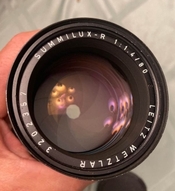 80ad.jpg71.1 KB · Views: 54
80ad.jpg71.1 KB · Views: 54 -
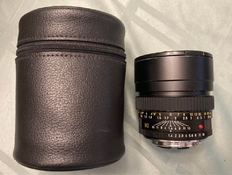 305696372_10158522624371087_3908598967820137013_n.jpg142.2 KB · Views: 51
305696372_10158522624371087_3908598967820137013_n.jpg142.2 KB · Views: 51 -
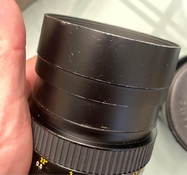 305754272_10158522624411087_5199111100224037625_n.jpg82 KB · Views: 49
305754272_10158522624411087_5199111100224037625_n.jpg82 KB · Views: 49 -
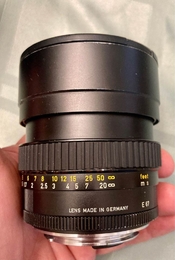 305910247_10158522624396087_5491028155721473290_n.jpg88 KB · Views: 47
305910247_10158522624396087_5491028155721473290_n.jpg88 KB · Views: 47 -
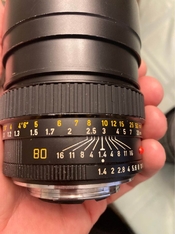 305663821_10158522624316087_8273585533648287929_n.jpg89.9 KB · Views: 44
305663821_10158522624316087_8273585533648287929_n.jpg89.9 KB · Views: 44 -
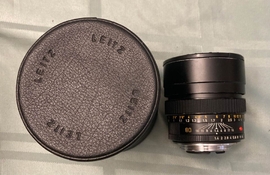 305795411_10158522624281087_2933245220733489600_n.jpg123.1 KB · Views: 47
305795411_10158522624281087_2933245220733489600_n.jpg123.1 KB · Views: 47 -
 305912856_10158522624241087_7281758191869466935_n.jpg64.8 KB · Views: 49
305912856_10158522624241087_7281758191869466935_n.jpg64.8 KB · Views: 49 -
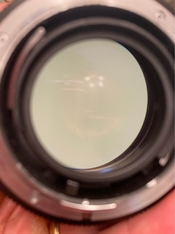 305660196_10158522624286087_7120371185510925656_n.jpg52.5 KB · Views: 51
305660196_10158522624286087_7120371185510925656_n.jpg52.5 KB · Views: 51 -
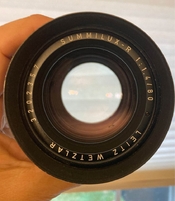 305703581_10158522624291087_8183745274271501089_n.jpg90.8 KB · Views: 66
305703581_10158522624291087_8183745274271501089_n.jpg90.8 KB · Views: 66 -
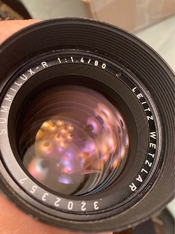 305745419_10158522624341087_8364289732522024033_n.jpg102.7 KB · Views: 64
305745419_10158522624341087_8364289732522024033_n.jpg102.7 KB · Views: 64





